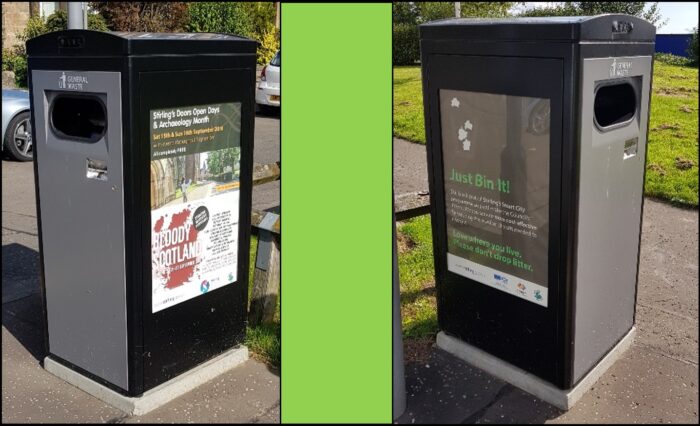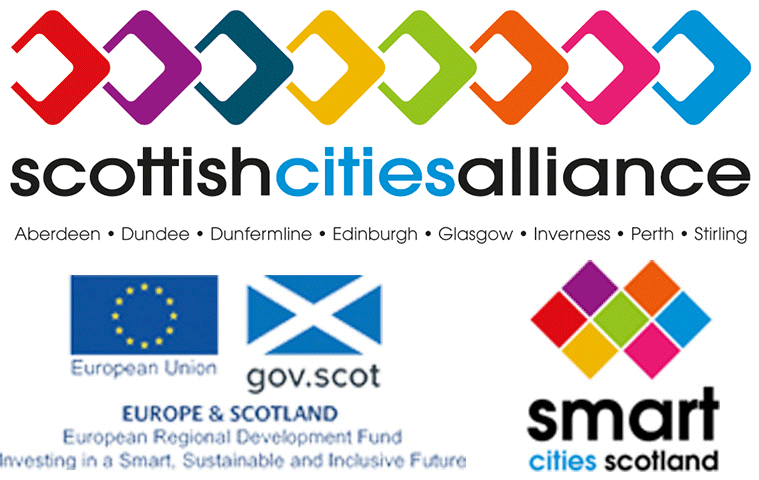
Project Overview
The Stirling Smart Waste project was one of four projects delivered by the city as part of Phase One of the 8th City ERDF programme. Grant support was used by Stirling Council to procure solar compacting bins which have the following key features:
- Waste is compacted on site, within the bins.
- Bin fill-levels are monitored via sensors.
- Integrated telemetry provides data for operations management.
- Bin operation and communication capability is driven by solar energy and/or battery power.
Thirty solar-comp-actor bins were sited at strategic points across Stirling city centre – with further opportunities for re-siting if need is identified for bin infrastructure to be deployed at alternative sites.
Why is it needed?
For many councils, the delivery of waste services is an area of high (and increasing) cost, requiring significant deployment of staff and resources, and with high levels of interest and scrutiny on behalf of communities, politicians and, where services are seen to be failing, of press and media.
Stirling is one of Scotland’s most historic places with a remarkable built environment and important designed landscape of great significance – both to the almost 95,000 residents across Stirling Council and to the many visitors and tourists; a clean, litter-free public realm is a must.
Impact and Benefits
In partnership with other cities across the 8th City programme, Stirling has sought to deliver an optimised waste infrastructure – in Stirling’s case for city centre litter bins. Benefits realised via this project include:
- As the waste is compacted in situ there is less spillage from the bins, so street litter waste volumes are reduced;
- Bin-fill-level monitoring facilitates identification and collection of litter bins only when they require servicing;
- Operatives are able to react quickly to unplanned capacity demands; this eliminates overflowing bins and associated costly emergency clean-ups; and
- Stirling Council collects data on the fill level of bins to work out the peak times for waste generation, how best to place bins in an area, and to arrange collections.
This project has exceeded expectations as the data provided by the bins procured is available using a web interface which allows detailed analyses. This has resulted in richer data, such as the detail of the fill level highlighting areas of potential trade waste. The number of bins required in each area is now known based on the fill level data, additionally, the seasonality of waste generated has also become apparent from the data collected.
Contact details and further info:
Ewan Prentice, Stirling Council, prenticee@stirling.gov.uk

 X
X Linkedin
Linkedin